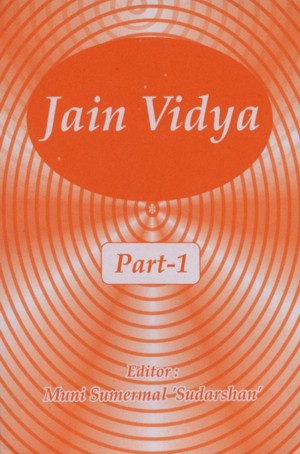Lesson - 16
Acharya Shri Mahasramana
It is an independent right of the head of the religious order to enthrone anybody as his successor. Only unique personalities can win the heart of the pontiff (Acharya) and reach the highest pedestal stage. Among those rare personalities, one unique personality is Acharya Shri Mahashraman. In the great tradition of (religious organisation of) Terapanth, Acharya Mahaprajna elected him as eighth yuvacharya. Right from the beginning he was hardworking, illustrious and a talented young student. His humbleness, simplicity, sincerity, gentleness, politeness and peaceful personality left a deep impact on society.
He is fond of solitariness and meditation. He whole heartedly dedicated himself in acquiring spiritual knowledge. His great qualities, made him Mudit muni from Mohan, then Yuvacharya Mahashraman and then ultimately the successor of Terapanth.
He was born in Rajasthan on V.S. 2019 (vaisakha shukla navami) i.e. 3rd May 1962 in Sardarshahar, Churu. His parents were Nemadevi and Jhumarmalji. Who knew that this little child would become the head of Terapanth sect? Who imagined that he would glorify the Dugar dynasty? Sometimes future gets reflected in present. He was the seventh child among his eight siblings. He lost his father at the early age of seven. An unexpected emptiness entered the family. The absence of his father was made up by his mothers’s love and affection. She taught him good moral values and gave him right education. As a result, he was inclined towards spirituality and religion.
With passage of time, he started getting detached from the material world and started moving towards spirituality. One day, he expressed his feelings to his mother. Mother explained him about this path and said- “Oh son! You have chosen the best path, but this path is full of thorns. It is not like enjoying sweet delicious dish, it is a herculean task. It is like chewing iron seed with wax teeth. Before talking about initiation, practice penance and test yourself. Be careful.”
Inspite of knowing that it is a difficult path, he did not change his mind. His feeling of detachment increased day by day. As time passed, he expressed his feelings before Achrya Tulsi. At that time Acharya Tulsi was in Delhi to celebrate 2500th anniversary of Tirthankar Mahavira’s (nirvan) liberation. Acharya Shri found him capable for initiation and after due investigation, he approved for his initiation in Sardarsahar by Muni Sumermalji.
At the age of 12, he was initiated by Muni Sumermal ji on Sunday on V.S. 2031 Vaishakha shukla chaturdasi i.e. 5th may 1974. His entire life changed after initiation not only externally but also internally. Study of scriptures and practice of meditation became a part and parcel of his life. At that time, his daily routine was to refrain from unnecessary talk and to memorize sutras like a machine. He avoided all sorts of deviations and loved being alone. During study period, he learnt various languages like Sanskrit, Prakrit, Hindi and English. Sometimes he stayed with gurudev and at times had an independent journey too. He continued to stay with Gurudev from Bidasar Maryada Mahotsav, i.e., from vikram samvat 2040.
Ganadhipathi Gurudev Tulsi was an extraordinary personality. He recognised his capabilities, wanted him to progress and succeeded in making him an outstanding muni and a highly talented personality.
In vikram samvat 2042 (1986 A.D.) Magh shukla saptami (16th February, 1986), on the occasion of Maryada Mahotsav in Udaipur, Acharya Tulsi asked him to assist Yuvacharya Mahapragya in his internal works.
In the year vikram samvat 2043 vaishak shukla chaturthi (14th may, 1986), on the eve of akshaya tritiya, he became group leader in Beawar.
In the year 2046 Bhadrav shukla navami (9th september 1989), he was appointed as Mahashraman in yogakshemavarsha. This post was newly inaugurated. He was highly acclaimed after the post of yuvacharya.
In the process of Vikas Yatra, Mahashraman had proceeded with four independent yatras.First yatra was completed in the year 1990 from February to March which started from Ladnun, Sardarshahar via Dungargarh and ended at Chhoti Khatu.
Second independent yatra started in the year 1990 from November to December, after Pali Chaturmas. This Yatra was executed in Sivanchi Malani and was completed in Sojat road via Rani Station on 10th January 1991. After completion of his yatra, Gurudev Tulsi instructed that if he was found leading a luxurious life, he should do meditation for three long hours in standing posture. Muni Mudit was so humble that he at once accepted his orders without complaining.
His third Vikas yatra started in the year 1994-1995 on 25th November to 4th January after Delhi Chaturamas in surrounding areas.
His fourth Anuvrat Preksha yatra started on 17 february 2000, from Taranagar to Ganganagar via Sardarshahar, Dungargarh and ended in Bidasar on 11 June 2000. This Yatra was more effective than the previous ones.
In the year Vikram samvat 2054 Ashadha Badi Teej (23rd June 1997) Ganadhipati Gurudev Tulsi unexpectedly expired at Gangashahar in Terapanth Sabha Bhavan. As a result, Acharya Mahapragyaji announced the post of Yuvacharya, in the year Vikaram samvat 2054 Bhadrva Shukla Baras (14th September 1997) in the presence of about fifty thousand people. Gurudev announced the name of Mahashraman as the next successor of Terapanth. He was appointed as Yuvacharya of our sangh. This was appreciated by all the people. At that time, his age was merely 35.
On 9th May of 2010, Acharya Shri Mahaprajnaji expired in Sardarshahar. Yuvacharya Shri Mahashramana was announced as the 11th acharya of Terapanth sect. On 23rd of May 2010, he enthroned officially the post of acharya amidst a huge audience in Gandhi Vidya Mandir of Sardarshahar.
Questions:
- Who initiated Yuvacharya Shri and in which place was he initiated?
- What was the name of the mother of Yuvacharya Shri?
- Where and when did Yuvacharya Shri acquire the post of Mahashraman?
- Mention the age of Mahashraman when he became yuvacharya.
- How many spiritual journeys were undertaken by him independently?
